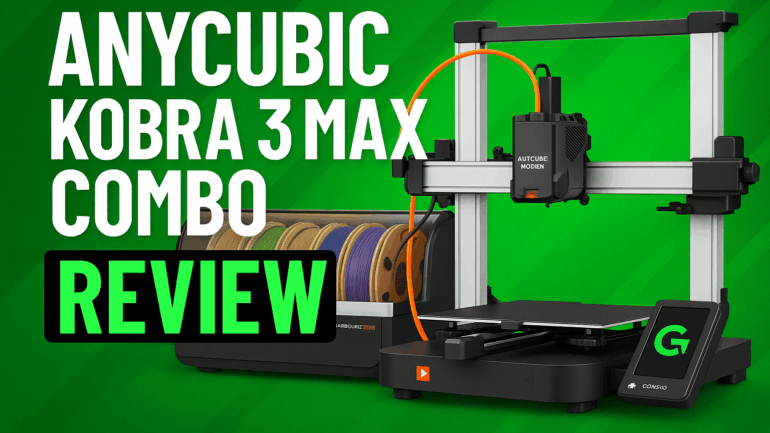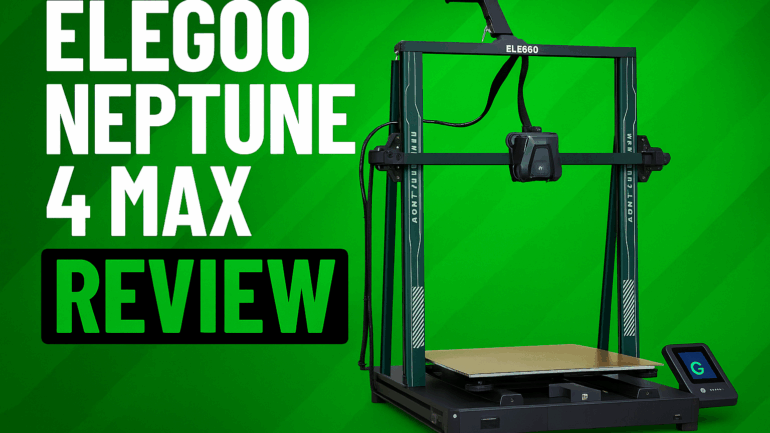Overview
The QIDI Tech X-Plus 4 is designed for serious users needing a reliable 3D printer capable of printing engineering-grade materials. With a fully enclosed chamber, single direct-drive extruder, AI-assisted leveling, and a high-temp hotend (up to 370°C), this printer competes with machines twice its cost. We tested several units extensively to see how it performs under real-world conditions.
This review follows our standardized format, presenting information in structured tables, technical breakdowns, and head-to-head comparisons with alternatives.
Print Performance Analysis
The X-Plus 4 handles short, complex, and multi-day prints across a range of materials. It especially shines with ABS, ASA, Nylon, and PC thanks to its heated chamber and high-temp hotend.
| Job Type | Performance Summary | Common Issues |
|---|---|---|
| Small PLA models | Excellent detail, quiet operation | None |
| ASA/ABS enclosures | Stable warping control, high adhesion | Minor adhesion issues on first layer |
| Multi-day functional | Strong bonding, minimal drift | Slight stringing with support structures |
| Nylon CF, PC jobs | Great fusion, no delamination | Needs dry filament or drybox |
Enclosure & Thermal Stability
The fully enclosed design supports better temperature control and improves print quality for sensitive filaments.
| Feature | Description | Impact |
| Fully enclosed chamber | Passive ambient heat retention | Reduces warping for ABS/PC/Nylon |
| Filtered ventilation | Active carbon and HEPA-style filters | Safer indoor use with odor management |
| Door interlock sensor | Pauses print when door is opened | Preserves consistent thermal environment |
Hotend & Bed Capabilities
With support up to 370°C and a 120°C heated bed, the X-Plus 4 meets the lower threshold of PEI and other high-end materials.
| Component | Capability | Notes |
| Nozzle Temp | 370°C max | Ideal for Nylon CF, PC, PEI-lite, ABS+; uses bi-metal, hardened steel nozzles |
| Bed Temp | 120°C max | Compatible with most engineering-grade adhesives |
| Chamber Temp | Passive heating | Helps eliminate curling and delamination |
AI Leveling System
QIDI’s AI-leveling is reliable but slow. Manual tweaks are still occasionally needed, especially with exotic filaments.
| Function | Performance | Notes |
| AI Bed Leveling | Very accurate once complete | Can stall with dirty nozzles or warped beds |
| Z-Offset Tuning | Persistent across sessions | Works well on ABS/PC; PETG can vary |
| First Layer | Strong and consistent | Minor issues with very old flexible filaments |
Tip: The only recurring issue we encountered was an occasional bed height/leveling mismatch. Dropping the bed all the way to the bottom and then re-homing usually resolved this. Once adjusted, it stayed consistent for long stretches.
Extrusion System
The X-Plus 4 uses a single extrusion setup and does not support multi-material printing out of the box.
| Feature | Performance | Notes |
| Single Extruder | Reliable & consistent | Great for engineering materials |
| Multi-material Print | Not available | Awaiting QIDI BOX expansion |
| Filament Swap Time | Manual intervention | No purge block, no automated handling |
Support & Serviceability
QIDI provides detailed guides, modular components, and exceptional support.
| Component | User Replaceable? | Notes |
| Hotend/Nozzle | ✅ Yes | Hardened bi-metal hotend included |
| Extruder Module | ✅ Yes | Full guides included, shipped fast if issues arise |
| Board/Screen | ⚠️ Limited | Board is proprietary, screen is replaceable |
| Firmware Access | ❌ Closed | No Klipper support, QIDI-only updates |
Print Quality Observations
| Print Behavior | Description |
| Excellent Surface Quality | Consistent extrusion, especially with ABS/ASA |
| PC Warping Control | Requires glue stick or PEI plate for long jobs |
| Ringing Above 60mm/s | Slight on large flat walls, more noticeable on tall prints |
| Flex Material Inconsistency | Works better with stiffer TPUs; squishy ones need guides |
What Real Users Say
“It’s a tank. I’ve been running Nylon nonstop and it hasn’t missed a beat.”
“Support actually answers emails. Got a replacement part within 3 days.”
Real Print Example
This printer is among the most reliable we’ve tested. In this video, we can see the QIDI X-Plus 4 printing one of our custom designs. As shown, the printer performs extremely well across a range of engineering-grade materials.
[Insert working print video here]
Issues to Note
While overall reliability is excellent, there are still some minor drawbacks:
The LCD can occasionally become unresponsive
Heat sock tends to fuse to the hotend, making maintenance more difficult
Slight ringing above 60mm/s on tall prints
Bed height/leveling mismatch can occur; re-homing resolves it
Multi-material functionality is absent until QIDI BOX is released
How It Compares
| Printer | Build (mm) | Max Temp | Extruder Type | Enclosure | Speed | Price |
| QIDI Tech X-Plus 4 | 280×300×300 | 370°C | Single | ✅ Full | 120 mm/s | ~$599 QIDI |
| Bambu Lab P1S | 256×256×256 | 300°C | AMS Compatible | ✅ Basic | 500 mm/s | ~$699 Bambu |
| FlashForge Creator Pro 2 | 200×150×150 | 240°C | IDEX | ✅ Full | 100 mm/s | ~$499 FlashForge |
| Elegoo Neptune 4 Pro | 225×225×250 | 260°C | Single | ❌ Open | 500 mm/s | ~$299 Elegoo |
Pros & Cons
| Strengths | Limitations |
| Excellent enclosure and thermal stability | Slower than Klipper/AMS-based systems |
| Prints Nylon, PC, ASA, ABS with ease | No open firmware or third-party tuning |
| Includes responsive, fast support | No multi-material system included at launch |
| Clean print quality and repeatable results | Occasional LCD and heat sock maintenance issues |
⭐ Conclusion: 4.0 / 5 Stars
The QIDI Tech X-Plus 4 is a powerhouse for engineering-grade materials and enclosed printing. With consistent performance, high-end features, and exceptional support, it’s an ideal pick for prosumers.
While the printer lacks multi-material support and has minor usability quirks, these don’t overshadow its strengths. This is the most reliable printer in our test fleet.
✅ Our Recommendation
This printer is for those who need to print engineering-grade material. Thanks to the 370°C hotend and 120°C bed, this printer can print ABS, PC, Nylon, and even some PEI-lite blends for under $600.
For serious users who need a reliable device, the X-Plus 4 is an excellent choice when working with high-temp filaments. Support is fast and reliable, and the machine itself is well-built and easy to maintain. We’re genuinely happy with its performance.
However, the lack of a multi-material system prevents it from taking the crown. QIDI’s upcoming QIDI BOX may change that, but until it’s released and tested, we must judge what’s available.
Recommended for users needing thermal control, strong material compatibility, and fast support—just not multi-color printing.
⭐ Final Score Breakdown
| Category | Rating (out of 5) |
| Build Quality | 5.0 |
| Print Reliability | 4.5 |
| Material Compatibility | 5.0 |
| Software & Firmware | 3.5 |
| Maintenance & Service | 3.5 |
| Multi-Material Support | 2.0 |
| Support Quality | 5.0 |
| Overall Rating | 4.0 / 5 Stars |


